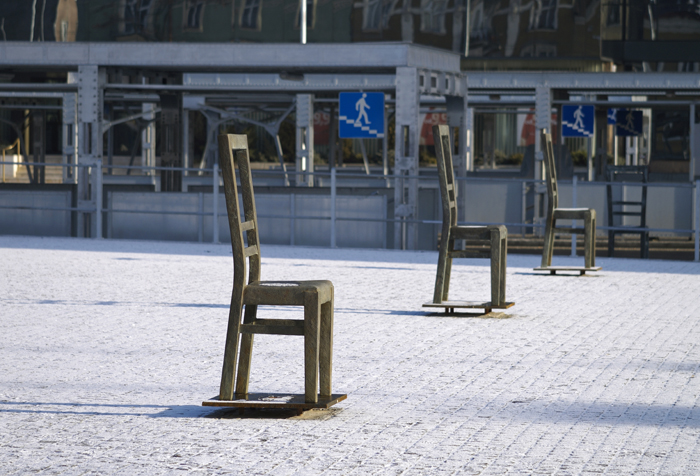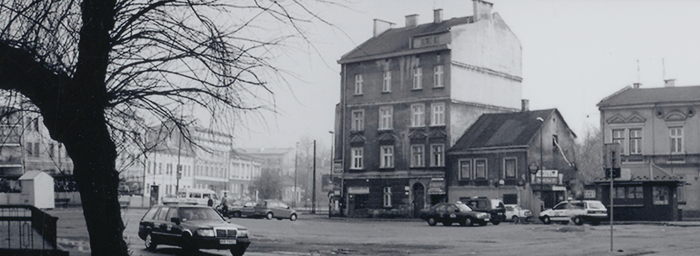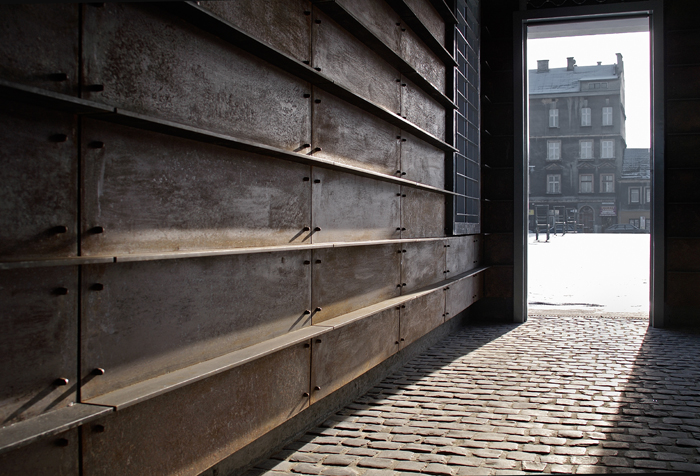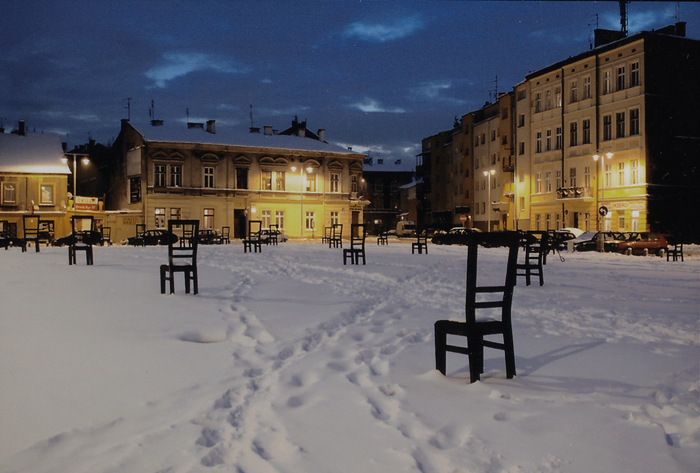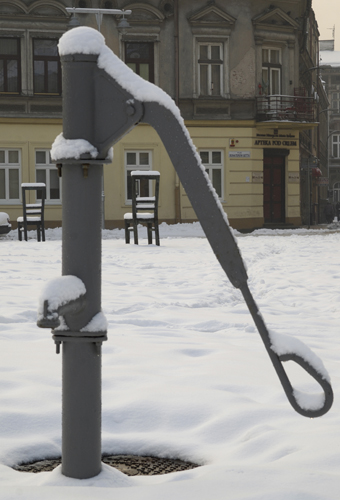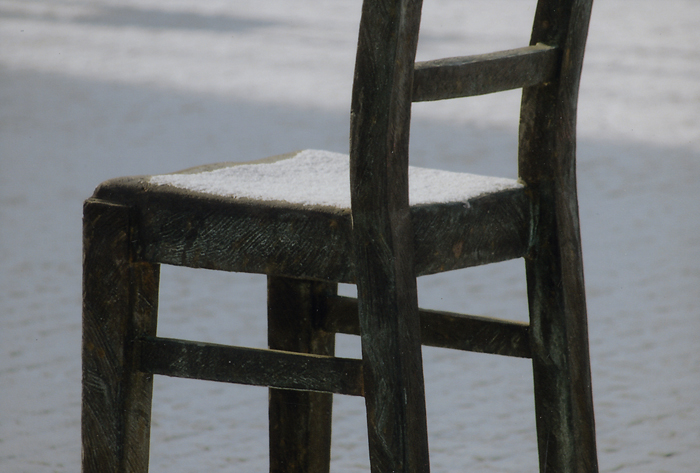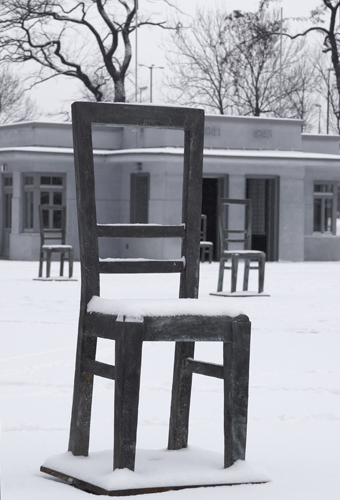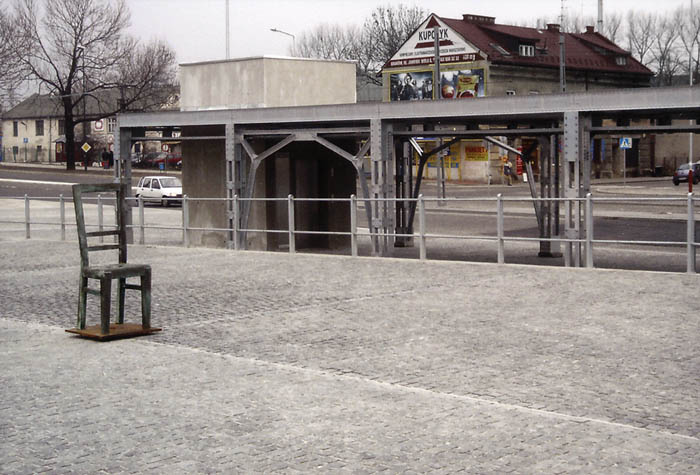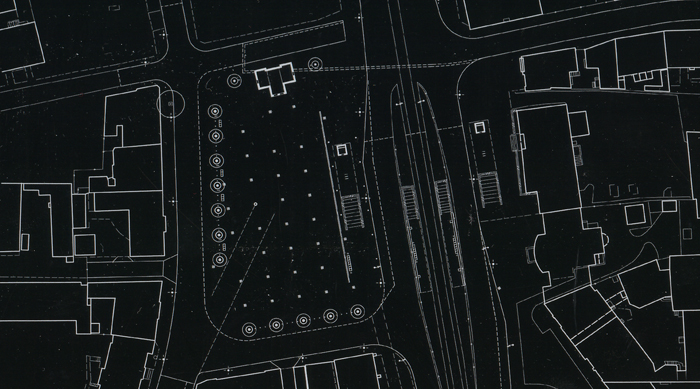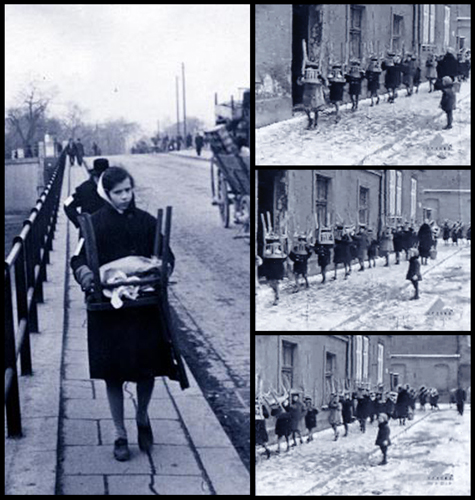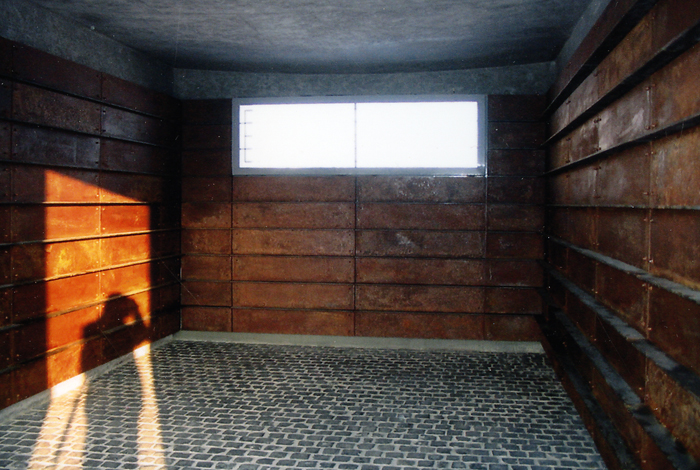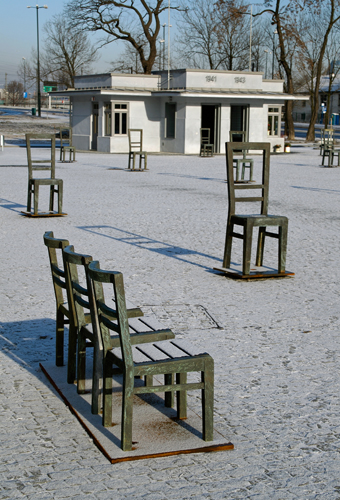Previous state
Situated in the Podgórze district, which in 1941 was turned into the Krakow Ghetto, the former Plac Zgody [Concord Square] was designated 'Umschlagplatz' under the Nazi occupation, the place where the Jews had to congregate to be deported. In 1943, once the Ghetto had been emptied, the belongings which the Jews had managed to carry as they were herded around–and which they had been forced to abandon before beginning their last journey to Plaszow or Auschwitz–had accumulated. Wardrobes, suitcases, tables, chairs; in the square “an incalculable amount of furniture which had been carried backwards and forwards countless times was rotting”, according to Tadeusz Pankiewicz. That witness, who was not a Jew, ran Apteka Pod Orlem, a chemist's shop at number 18 of the square which was the only one in the whole Ghetto which the Nazis allowed to continue with its activity due to the fear of spreading epidemics. Taking advantage of the concession, the pharmacy provided the Jews not only with medicine, but also with smuggled groceries, information from the outside and a space for the clandestine meetings of the resistanceAim of the intervention
When over sixty years had passed, in 2005 Krakow City Council decided to intervene on the square in order to explain its sinister past. Instead of installing a singular monument, the intervention set out to use the square itself as a channel for passing on the memory. And so it was deliberately conceived as a poetic container which transformed the place into a sign of the past.As the authors of the project explain, it was impossible to talk about that tragedy literally. Written documents, photographs and direct testimonies of the survivors describe the history of the Ghetto as a succession of removals. In one photograph we can see a line of children filing along the pavement, each carrying a chair on his head. In another a little girl carries her bundle between the legs of a chair with the back sticking up. The choice, then, was to tell the story of the place through the configuration of the urban space itself, so that the memory of the absent ones would be manifested through the presence of everyday objects which compose the urban furniture.
Description
The square measures 13,000 square metres and is completely paved with blocks of grey siennite rock. On the paving there are a series of items of urban furniture, most of which are chairs arranged on a virtual grid of about five by five metres and all facing in the same direction. Each chair is fixed to the ground by a small, slightly elevated metal platform which makes it float on the paving. That, and the fact that they are slightly larger than normal, gives them a certain dreamlike air. That effect is heightened when the square is covered in snow and the darkness of the chairs stands out against the abstract whiteness. Both the chairs and the other objects in the square are made of bronze or rust-coloured wrought iron. And so the waste paper bins, the awnings of the tram stops, the hand pump for drawing water from a well, the bicycle parks and all the traffic signs, stripped of their usual functions, take on a symbolic unitary character and convey the memory of the objects abandoned by the Jews in the 'Umschlagplatz'.On the north side of the square there is still a small police box which the Nazis, with their macabre capacity for organisation, used to identify and count the Jews. The blocks of the paving run inside the box, the inside of which is coated with planks of patinaed bronze.
Assessment
The public spaces dedicated to historic memory, especially when referring to the Holocaust, are often laden with monumentality. In a strange paradox, in Plac Bohaterów Getta the memory of extraordinary events is evoked through ordinary objects. The distance that normally separates urban furniture from commemorative sculptures and monuments is diluted here in a surprising reconciliation between function and symbolism. Shunning dramatic spectacle and any sublimation of the tragedy, the contained intervention allows for an everyday use of the square without eluding the responsibility for making the presence of the absent ones strongly felt.David Bravo Bordas, architect
[Last update: 02/05/2018]


